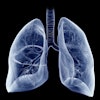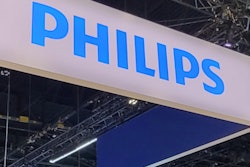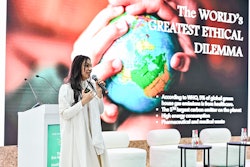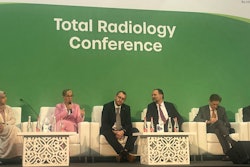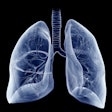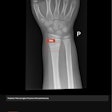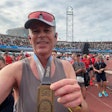Arab Health 2025 provided valuable insights into the evolving healthcare market, from technological advancements to regional growth opportunities and geopolitical challenges. As the industry continues to navigate digital transformation, interoperability, and shifting market dynamics, vendors and healthcare providers alike must adapt to ensure sustainable, high-quality patient care in an increasingly complex global environment.
Below are the key market trends we detected at the meeting, held in Dubai, United Arab Emirates (UAE), from 27 to 30 January. We also discuss their expected evolution throughout 2025.
Trend One: Device Integration and Interoperability
Digital transformation has been a crucial driver in the healthcare market for years, with device connectivity becoming an industry standard. The ability to integrate patient data seamlessly across healthcare information systems is increasingly vital as healthcare providers innovate. Vendors are prioritizing interoperability in their next-stage developments, ensuring medical devices communicate efficiently and securely across care settings.
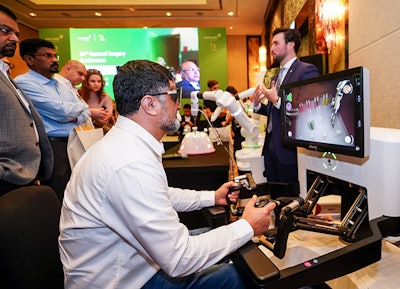 Arab Health provided a glimpse into the future of healthcare. All photos courtesy of Informa Markets -- Healthcare, organizer of Arab Health.
Arab Health provided a glimpse into the future of healthcare. All photos courtesy of Informa Markets -- Healthcare, organizer of Arab Health.
As seen at the 2024 meeting of the Healthcare Information and Management Systems Society (HIMSS), major industry players are championing the Service-Oriented Device Connectivity (SDC) interoperability standard. This framework aims to enhance patient data sharing, which could significantly improve clinical outcomes.
A key advancement facilitated by SDC is the evolution of the Smart ICU, streamlining workflows to prioritize crucial alerts and reduce physician workload. The SDC framework is being developed in three phases: The first, currently under U.S. Food and Drug Administration (FDA) review, enables unidirectional data transfer; the second will allow devices to share alerts; and the third aims for bi-directional communication, allowing automated therapy adjustments based on real-time patient data.
While some vendors are embracing SDC, others are developing proprietary solutions.
Despite ongoing advancements, widespread bi-directional device communication remains a long-term goal. Adoption will largely depend on physicians' confidence in allowing automated therapeutic adjustments, a concept increasingly referred to as AI-Driven Healthcare 2.0.
Trend Two: Market Expansion and Regional Focus
The global medical technology market is experiencing rapid regional growth, driven by regulatory shifts, economic conditions, and technological advancements. The Middle East & Africa (MEA), Latin America, and Asia-Pacific are seeing notable expansion, whereas Europe faces slower adoption due to stricter regulations and dwindling healthcare budgets.
Arab Health underscored MEA's growth potential, with Saudi Arabia, UAE, and Qatar leading digital health investments. Government-driven initiatives and hospital adoption of AI-powered solutions are accelerating progress. However, challenges persist, including regulatory and funding gaps in Africa and a heavy reliance on imports, primarily from Europe and the U.S.
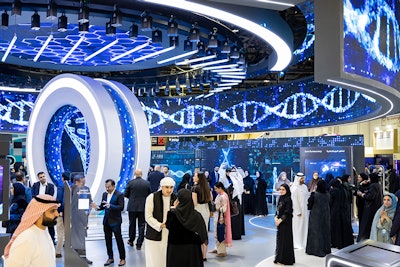 The Middle East continues to offer significant growth potential, with Saudi Arabia, United Arab Emirates, and Qatar leading digital health investments.
The Middle East continues to offer significant growth potential, with Saudi Arabia, United Arab Emirates, and Qatar leading digital health investments.
In Latin America, markets such as Brazil, Mexico, and Argentina are rebounding from postpandemic budget constraints. Favorable political shifts are encouraging healthcare investment, although procurement fluctuations continue to create unpredictable growth.
Meanwhile, Asia-Pacific -- led by China, India, and Southeast Asia -- is experiencing surging demand for digital health solutions. India, in particular, is moving toward advanced care models, increasing demand for high-end medical technologies -- demands that are, increasingly, being met by local vendors. However, China's evolving Diagnosis-Related Group (DRG) payment model and ongoing anti-corruption measures are reshaping procurement strategies, prompting vendors to navigate new regulatory landscapes.
Trend 3: Portfolio Expansion
Rising healthcare costs and shifting funding priorities are forcing providers to seek cost-efficient solutions while maintaining high-quality care. Vendors are responding by offering flexible product portfolios, balancing affordability with advanced capabilities.
At Arab Health, some vendors demonstrated their newest offerings to broaden their ability to cater to a wider customer base. Other vendors also unveiled expanded portfolios. These developments reflect a broader industry trend: delivering adaptable, cost-conscious solutions to meet diverse healthcare needs.
Trend 4: Geopolitical Impact
The global landscape is also becoming even more difficult to navigate with various geopolitical factors developing following recent conflicts, political upheaval, and a general ramping up of international tensions. Geopolitical trends are starting to significantly impact the healthcare market. With impending updates to tariffs, trade agreements, and disruptions in the supply of medical devices, there is growing uncertainty about how the market will evolve in 2025.
Vendors are reassessing their strategies, focusing on regions with the most favorable expansion opportunities. However, the rise of localization policies -- which encourage domestic manufacturing -- poses significant challenges. Companies must weigh the risks and opportunity costs of establishing local production facilities against the potential rewards of securing market share in key regions.
Final Thoughts
Arab Health 2025 lived up to expectations, reinforcing its position as a leading healthcare industry gathering, with over 130,000 attendees and 4,000 exhibitors. Spanning multiple halls, the exhibition showcased international and regional vendors, with booths strategically placed throughout, including in walkways.
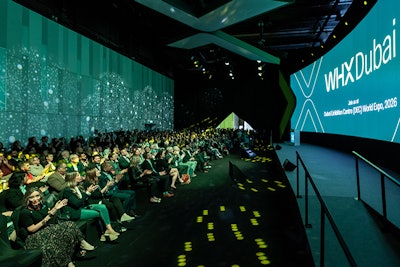 Arab Health is now being rebranded as World Health Expo Dubai (WHX Dubai). Next year's meeting takes place from 9-12 February in Dubai, UAE.
Arab Health is now being rebranded as World Health Expo Dubai (WHX Dubai). Next year's meeting takes place from 9-12 February in Dubai, UAE.
On the second day of the event, and in celebration of its 50th anniversary, Informa unveiled a significant rebranding. Using a spectacular light show at the Burj Khalifa, the company announced that Arab Health would henceforth be known as World Health Expo Dubai (WHX Dubai), reflecting Dubai's growing influence in global healthcare innovation and investment.
Interestingly, while broader issues around wellness and environmental, social, and governance (ESG) were catered for in a dedicated "Eco-Sphere," sustainability -- the central theme of the upcoming ECR 2025 -- was not at the forefront of discussions on the exhibition floor itself. This suggests that outside of Europe, for the time being at least, sustainability has yet to become a decisive factor in healthcare procurement decisions. It will be interesting to see if this dynamic changes in subsequent years.
Kelly Patrick is a research director at Signify Research, leading the management of the research teams within the Clinical Care and Medical Imaging groups. Vlad Kozynchenko is senior market analyst in the Digital Health team at Signify Research. Sam Wilson is a market analyst within the Clinical Care team at Signify Research.


